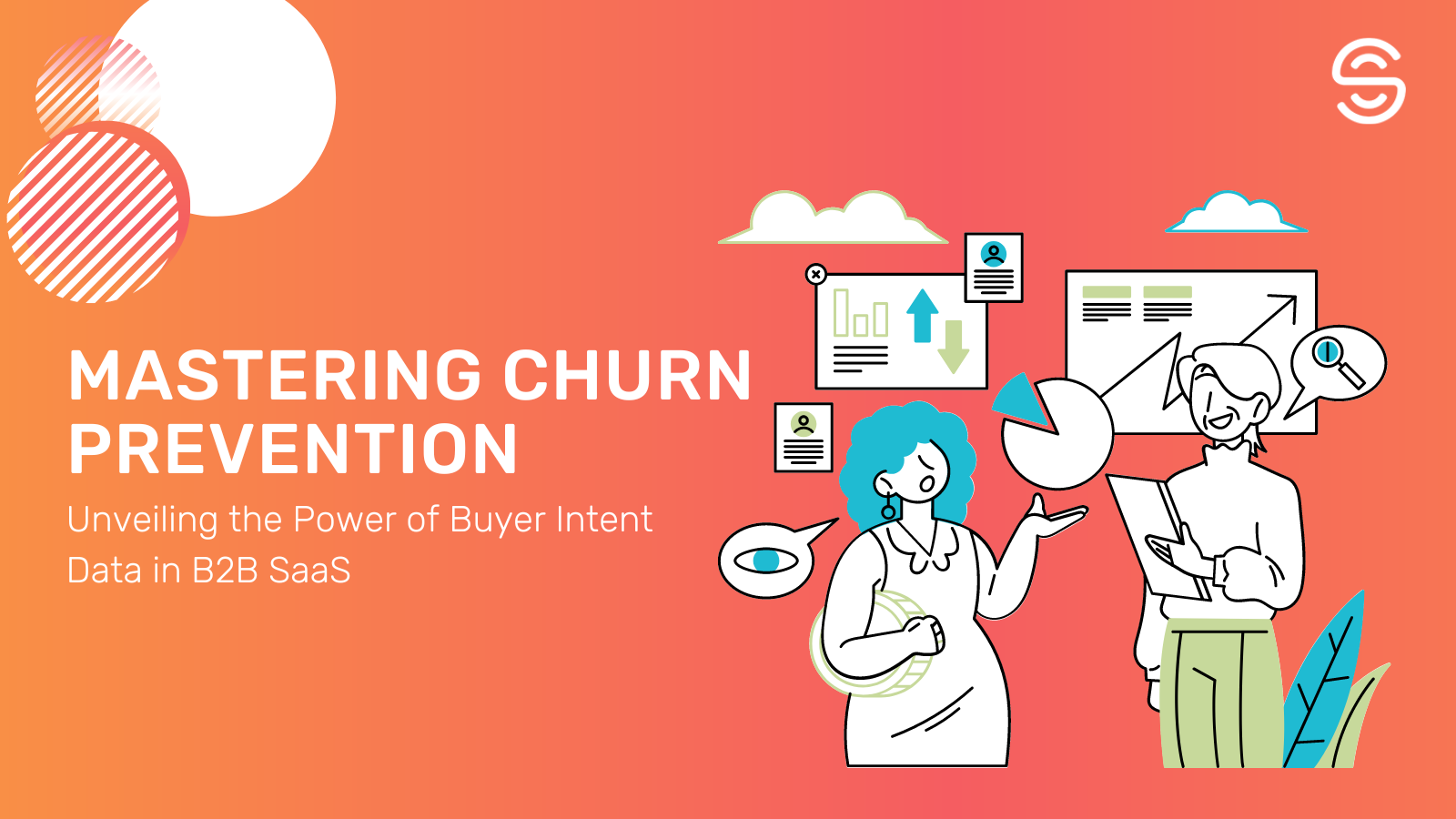- What is Customer Intent Data, and How is it Collected?
- What Events and Factors Often Precede Churn in the B2B Sector?
- Utilizing Buyer Intent Data to Mitigate Churn Risks
- Data-Driven Personalized Approach
- Content Types and Communication
- Tools and Platforms
- Personalized Communication Example
- Measuring Success and Conclusion
Mastering Churn Prevention: Unveiling the Power of Buyer Intent Data in B2B SaaS
August 4, 2023 5 min. read

Contents:
Try AI-Driven Insights
Monitoring for Free
Discover new business ideas and growth opportunities using
our AI-powered insights monitoring tool
In the competitive landscape of B2B SaaS, maintaining a low churn rate is vital for your business’s sustained growth and success. As SaaS customer churn remains a constant concern, understanding how to utilize buyer intent data effectively can be a game-changer in reducing customer churn in SaaS. In this article, we’ll delve into strategies and insights on how to prevent churn using valuable customer churn prediction and churn risk analysis techniques.
What is Customer Intent Data, and How is it Collected?
Before we explore strategies for preventing churn, let’s demystify customer intent data. This valuable resource encompasses the digital breadcrumbs left by potential and existing customers as they interact with your SaaS platform. It includes their online behaviors, engagement patterns, content consumption, search queries, and more. By analyzing these cues, you gain a profound understanding of their preferences, needs, and purchase intentions.
Collecting customer intent data involves a multifaceted approach:
Website Tracking: Monitoring website interactions, such as page visits, clicks, and time spent, provides insights into what features or solutions visitors seek.
Content Consumption: Analyzing which types of content (e.g., blog posts, webinars) a user engages with can reveal their specific interests and pain points.
Search Analysis: Examining the keywords users input during searches on your website or search engines offers a glimpse into their immediate requirements.
Email Engagement: Tracking how recipients interact with your emails—opens, clicks, downloads—can indicate their level of interest.
Social Media Interactions: Monitoring comments, likes, shares, and mentions across social platforms sheds light on what topics resonate with your audience.
Form Submissions: Analyzing form submissions provides direct insights into user preferences and their goals.
What Events and Factors Often Precede Churn in the B2B Sector?
In the B2B sector, churn rarely occurs out of the blue. Certain events and factors often precede churn, serving as warning signs for businesses to address. Some of these include:
Decline in Engagement: A noticeable decrease in user engagement, such as reduced login frequency or interaction with your SaaS platform, could signify growing dissatisfaction or shifting priorities.
Unresolved Issues: When customers’ concerns and issues remain unresolved, frustration can mount, leading them to seek alternative solutions.
Competitor Activity: Increased interaction with competitor content or engagement with rival businesses could indicate potential interest in switching providers.
Usage Patterns: Drastic changes in how customers utilize your SaaS may indicate evolving needs that your platform isn’t addressing adequately.
Contract Renewal Periods: The approach of contract renewal provides a suitable time for customers to reassess their options, making it critical to engage proactively during this period.
Lack of Communication: A sudden decrease in communication or feedback from a customer could signal waning satisfaction.
By recognizing these early warning signs, you can proactively address concerns and tailor your approach using insights gleaned from buyer intent data.
Utilizing Buyer Intent Data to Mitigate Churn Risks
Armed with a clear understanding of customer intent data, you can strategically implement churn prevention strategies:
Personalized Engagement: Utilize buyer intent insights to craft personalized interactions and offers, demonstrating your commitment to meeting their needs.
Proactive Communication: Reach out to customers showing early signs of churn risk. Address their concerns, provide solutions, and showcase the value your SaaS brings.
Feature Optimization: Analyze buyer intent data to enhance underutilized features or develop new ones that align with customer requirements.
Customer Education: Leverage the insights to create targeted educational content that empowers customers to maximize the benefits of your SaaS.
Exclusive Offers: Reward loyal customers with exclusive offers, discounts, or additional services to solidify their commitment to your platform.
Feedback Utilization: Actively seek customer feedback displaying churn risk indicators and use this input to drive continuous improvements.
Data-Driven Personalized Approach
Leveraging buyer intent data enables you to go beyond generic interactions and adopt a data-driven personalized approach. Tailoring your engagement based on each customer’s specific preferences and needs showcases your commitment to their success. By utilizing buyer intent insights, you can craft targeted messages that resonate with their pain points, offer solutions to their challenges, and highlight how your SaaS solution addresses their unique requirements.
Content Types and Communication
Incorporating customer intent data into your content strategy and communication efforts is pivotal. Identify the content types and channels your customers frequently engage with. Are they more inclined toward in-depth articles, video tutorials, or webinars? By aligning your content with their preferences, you enhance engagement and establish your brand as a valuable resource.
Tools and Platforms
Advanced tools and platforms are crucial in collecting, analyzing, and interpreting customer intent data. These tools can provide real-time insights into user behavior, enabling you to respond promptly to potential churn risks. Whether through analytics dashboards, customer relationship management (CRM) systems, or AI-driven data analysis platforms like Signum.AI, investing in the right technology empowers you to make informed decisions.
Personalized Communication Example
Imagine your analysis of the buyer intent data reveals a customer interacting less frequently with a specific feature of your SaaS. In response, you can initiate a personalized communication strategy. Send an email acknowledging their historical usage patterns and highlighting the underutilized feature’s benefits. Include a step-by-step guide or offer one-on-one consultation to help them fully leverage the functionality. This personalized outreach demonstrates your proactive approach and reminds the customer of the value your SaaS brings to their business.
Measuring Success and Conclusion
As you implement these strategies guided by customer churn prediction and prevention techniques and the insights derived from buyer intent data, you’ll likely observe a positive impact on your churn rate. Regularly monitor and evaluate the effectiveness of your initiatives. Measure increased engagement, feature adoption rates, and customer feedback. Continuously fine-tune your approach based on these results to ensure your churn prevention efforts align with your customers’ evolving needs.
In conclusion, harnessing the power of buyer intent data to prevent customer churn in B2B SaaS is a proactive and strategic approach. You can build stronger customer relationships and foster loyalty by utilizing a data-driven personalized approach and tailoring your content, communication, and engagement strategies.
